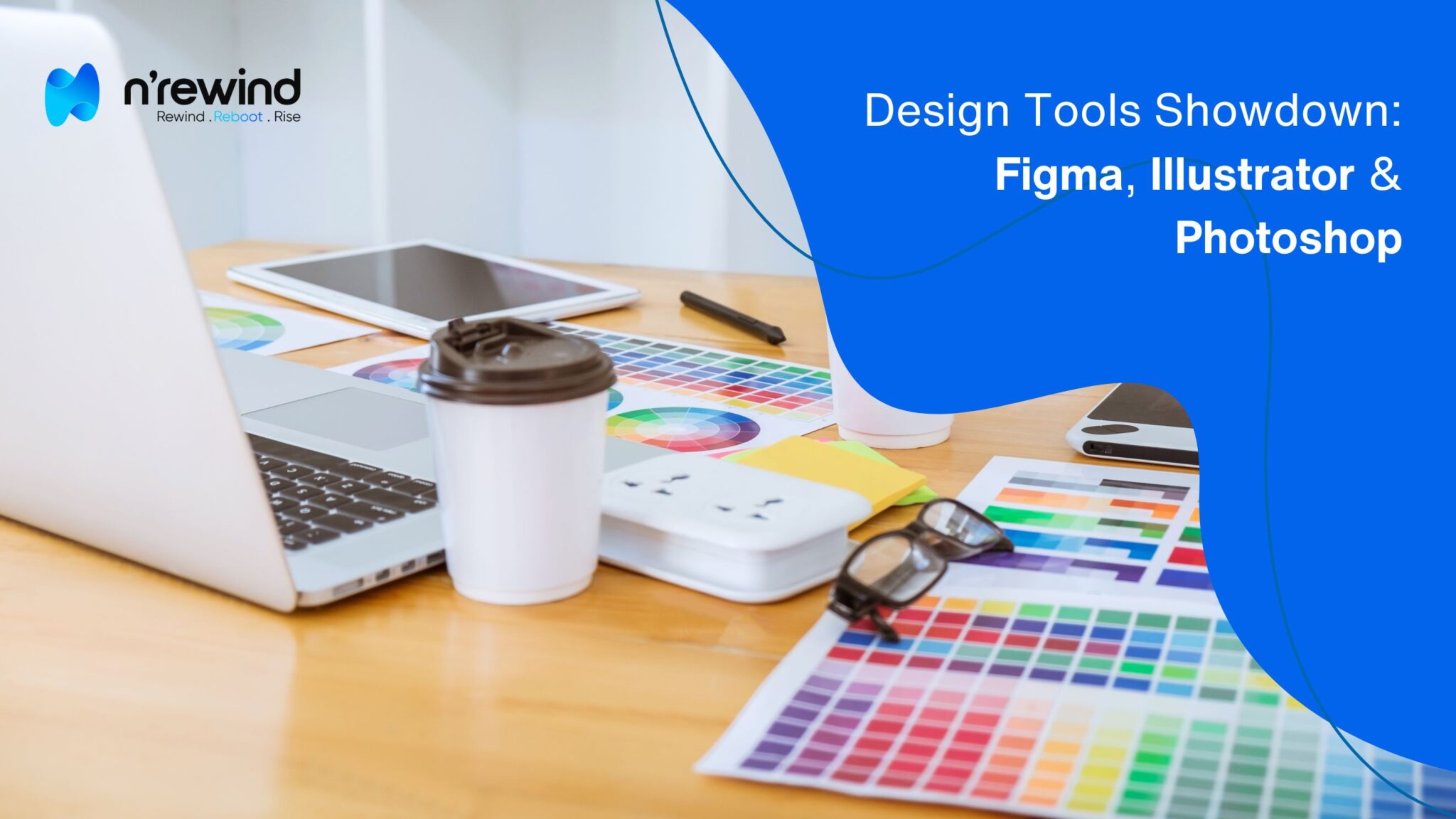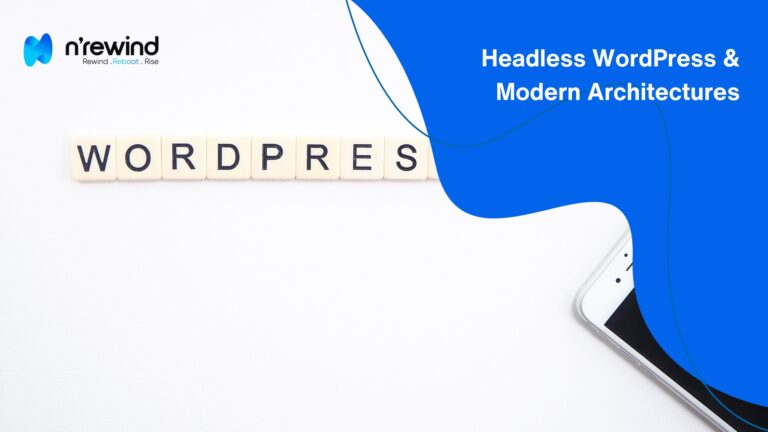Introduction
The world of design tools is filled with options, but three names dominate the conversation: Figma, Illustrator, and Photoshop. Each platform serves a different purpose, making it essential to know which one fits your project. While Figma has gained popularity in UI/UX design due to its collaboration features, Illustrator remains a favorite for vector graphics, and Photoshop continues to rule the domain of photo editing and digital art. Choosing the right tool can save time, streamline workflows, and improve project outcomes.
At NRewind, we specialize in helping brands unlock the power of the right design and development services such as Graphic Designing and Website Designing. With expertise in multiple tools, we ensure that your brand visuals remain sharp, professional, and effective. Understanding the difference between Figma, Illustrator, and Photoshop is the first step toward selecting the right approach for your creative needs.
Figma: The Future of Collaboration
Figma has revolutionized the way teams handle UI/UX design. Its cloud-based platform allows multiple designers to work simultaneously, making real-time collaboration easier than ever. Whether you are designing a website prototype or building a complex mobile app interface, Figma ensures that every stakeholder stays on the same page. Its browser-based flexibility means no installation headaches, making it lightweight yet powerful.
Some of the most appreciated Figma features include:
- Real-time collaboration with unlimited team members
- Cross-platform access via browser and desktop app
- Seamless prototyping for user flows and wireframes
For businesses seeking seamless design-to-development workflows, Figma integrates smoothly with tools like Slack and Jira, providing transparency and efficiency. At NRewind, we use Figma extensively for website development projects and WordPress Development, ensuring a smooth transition from mockups to real, functional websites. This ensures that brand visions are translated into user-friendly digital platforms.
Illustrator: The Vector Powerhouse
Adobe Illustrator remains the undisputed king when it comes to vector graphics. Unlike pixel-based tools, Illustrator allows infinite scalability without losing quality. This makes it perfect for designing logos, branding assets, typography, and print materials. Its pen tool, shape builder, and advanced gradients give designers unmatched control over their creations.
Key reasons professionals prefer Illustrator are:
- Infinite scalability for print and web assets
- Precision vector tools for logos and illustrations
- Professional typography for branding campaigns
At NRewind, we recommend Illustrator when clients need brand identity design that demands sharpness and versatility. From creating unique graphic designing elements to preparing print-ready files, Illustrator ensures every visual asset meets professional standards. Combined with Digital Marketing strategies, these designs help strengthen a brand’s recognition both online and offline.
Photoshop: Master of Images
Photoshop continues to be the industry leader for photo editing, digital painting, and creative composites. Its advanced editing tools, layer controls, and brushes make it indispensable for photographers and digital artists. Whether it’s enhancing images for a campaign or designing stunning banners for social media marketing, Photoshop provides unmatched creative freedom.
Top advantages of Photoshop include:
- Advanced image manipulation with layer-based editing
- Creative composites for campaigns and advertisements
- Wide brush library for digital art and painting
Businesses seeking visually appealing digital experiences often rely on Photoshop for detailed design work. At NRewind, our team uses Photoshop to enhance imagery across Website Designing and Mobile App Development projects. By combining image manipulation with precise UI layouts, we deliver experiences that feel both modern and engaging.
Choosing the Right Tool
While all three tools are powerful, the key lies in choosing the right one for your needs. Figma is ideal for real-time collaboration and UI/UX projects, Illustrator excels in branding and vector design, while Photoshop dominates in image editing and creative composites. Instead of treating them as competitors, businesses should view them as complementary solutions.
Here’s a quick breakdown:
- Figma → UI/UX, prototyping, collaboration
- Illustrator → Logos, vectors, branding assets
- Photoshop → Photo editing, creative compositions, advertising banners
At NRewind, we combine these tools based on project requirements. Whether it’s Graphic Designing, Website Development, or even digital marketing campaigns, our holistic approach ensures maximum efficiency and impact.
Conclusion
The design tools showdown between Figma, Illustrator, and Photoshop is not about finding a winner but about understanding when and how to use each. Figma brings collaboration, Illustrator ensures scalability, and Photoshop adds depth and detail. Together, they form a powerful toolkit for any business looking to strengthen its digital presence.
With NRewind as your design and development partner, you gain access to experts who know how to merge these tools for the best results. Whether you need Graphic Designing for brand identity, Website Development for business growth, or Digital Marketing for brand reach, our team ensures your vision is brought to life with the perfect mix of creativity and technology.
"Choosing between Figma, Illustrator, and Photoshop isn’t about which tool is better, but which one aligns with your design goals. Figma leads in UI/UX and collaboration, Illustrator excels at scalable vector graphics, and Photoshop dominates photo editing and digital art. With NRewind’s expertise in design and development, you can integrate the right tool into your workflow, ensuring your projects are efficient, creative, and future-ready."




